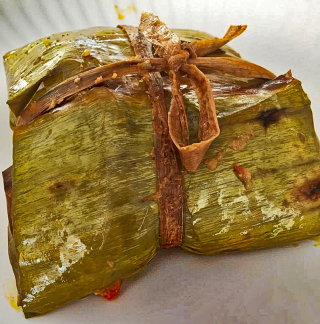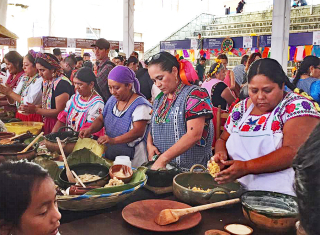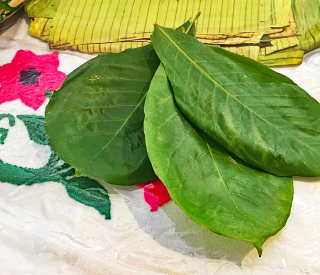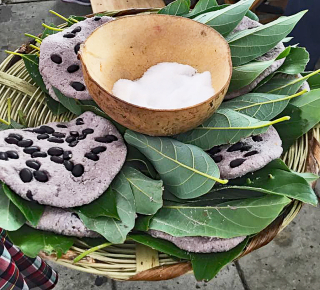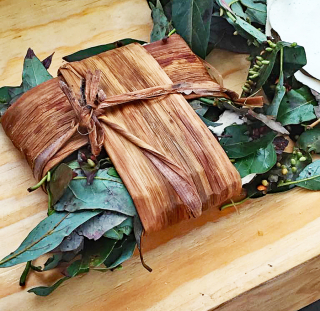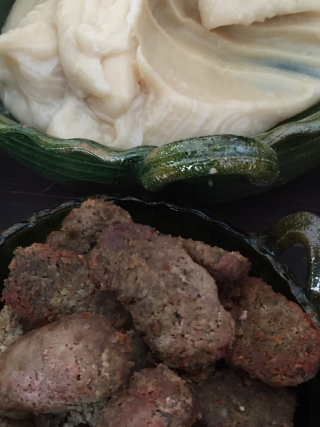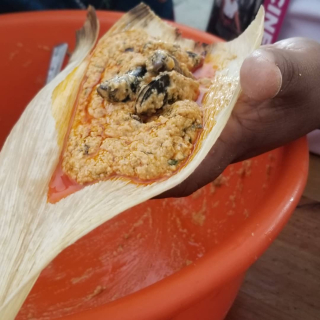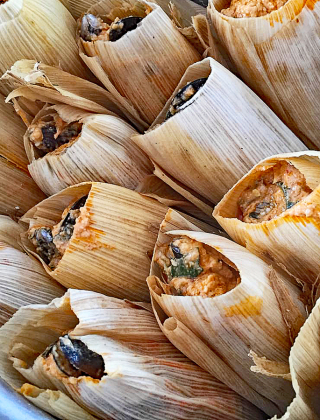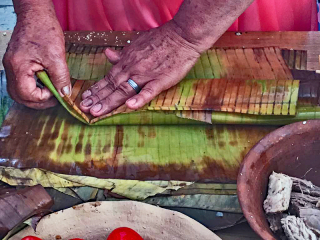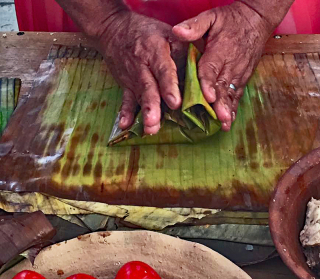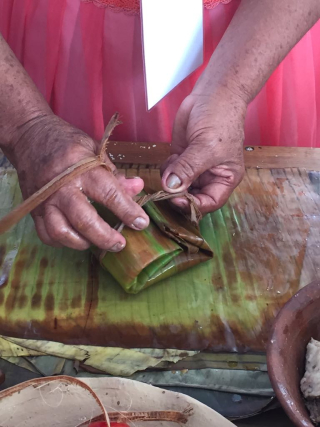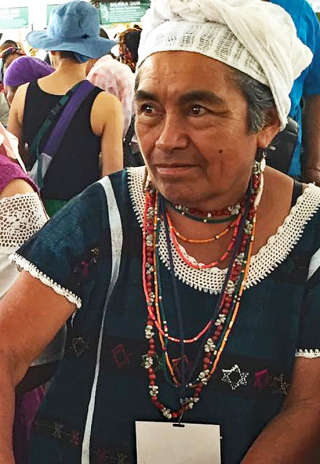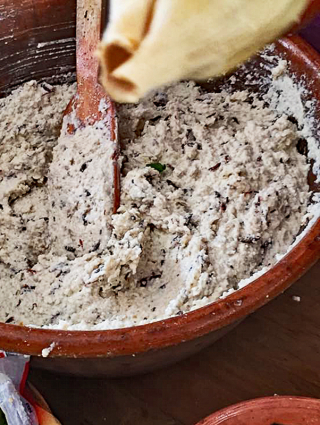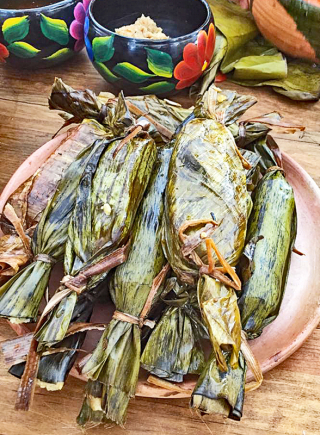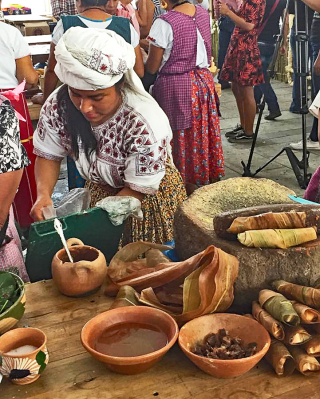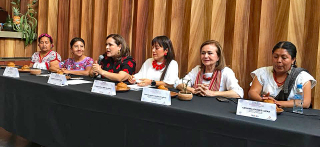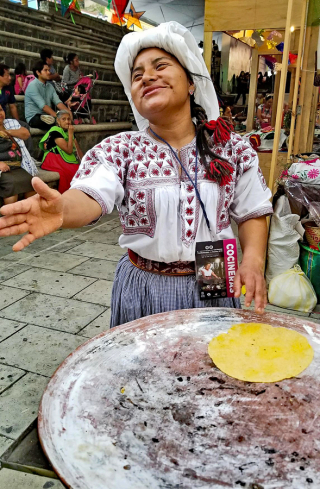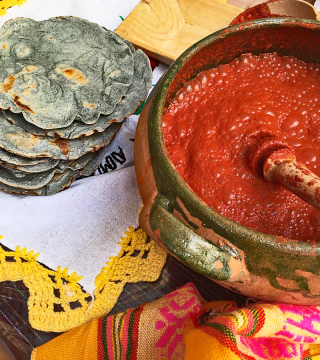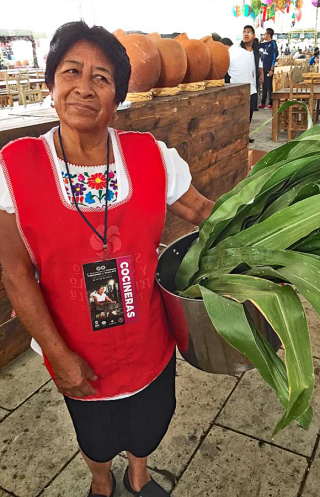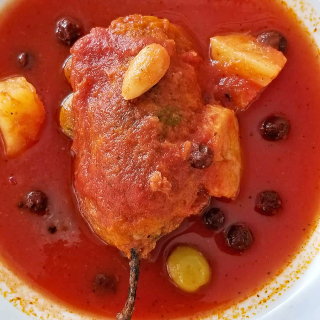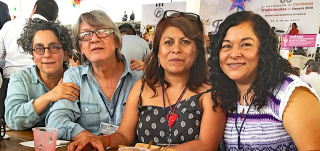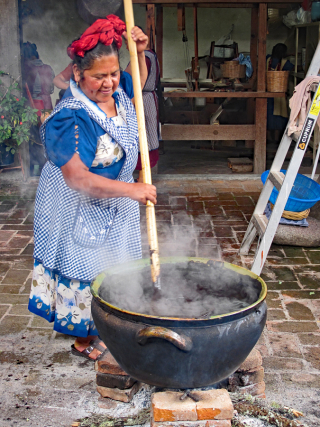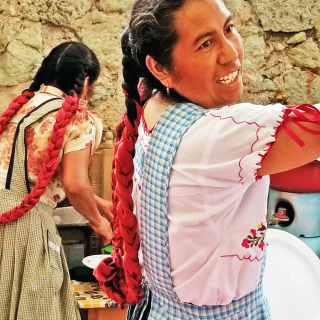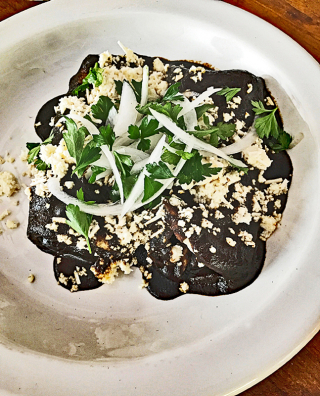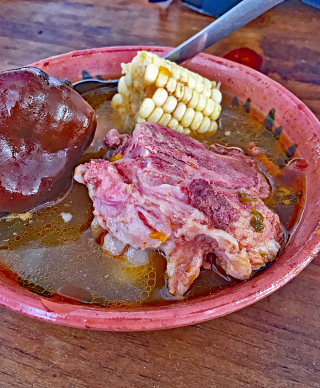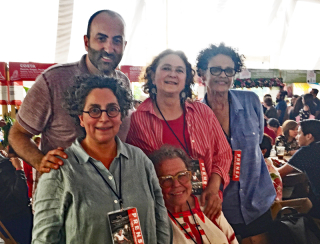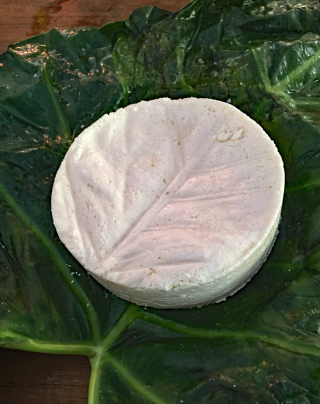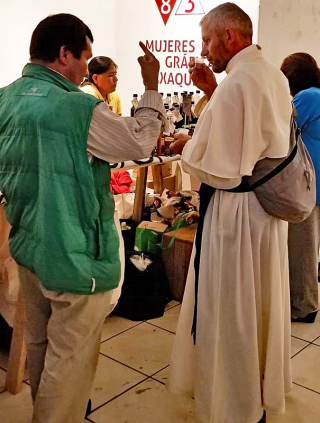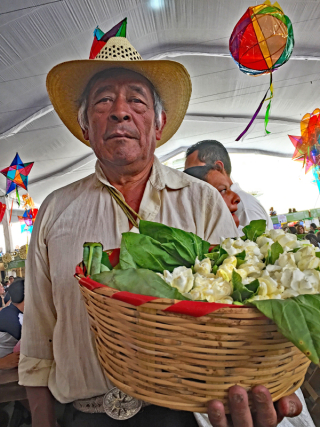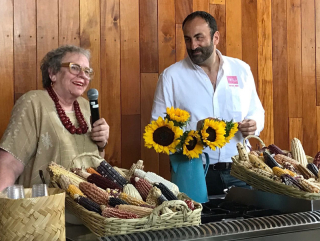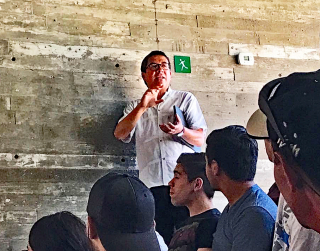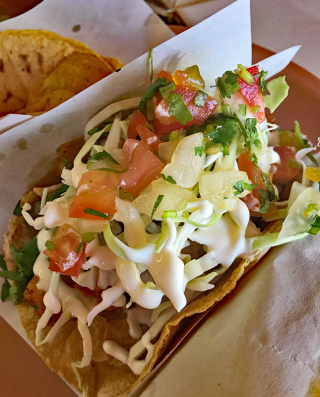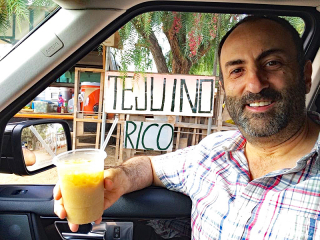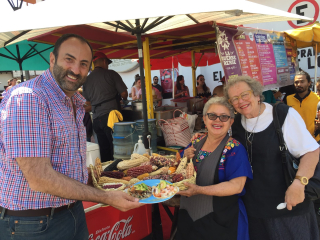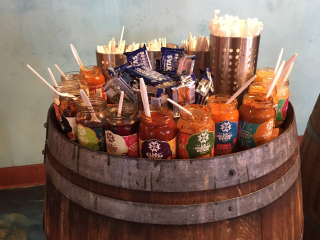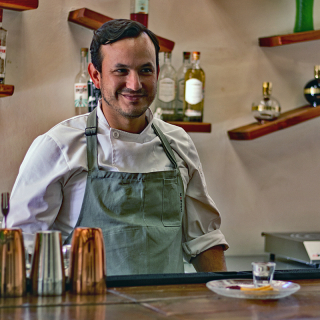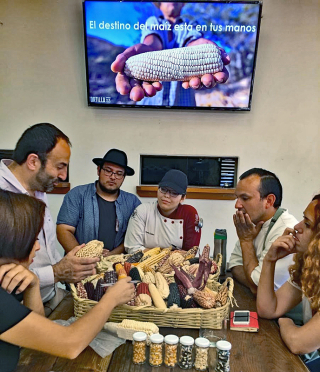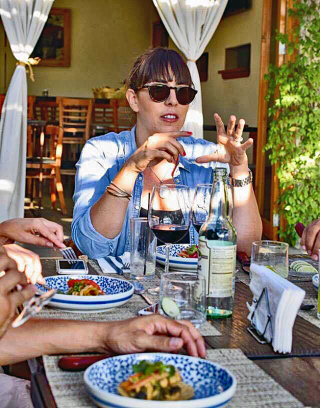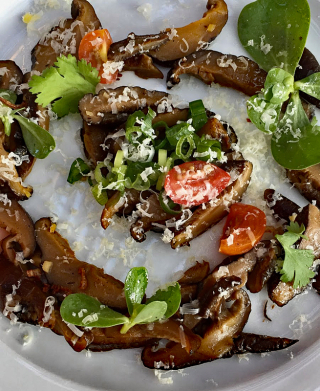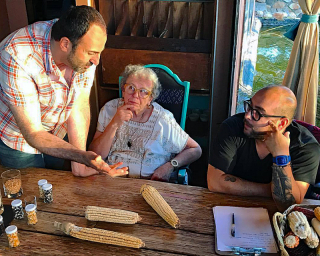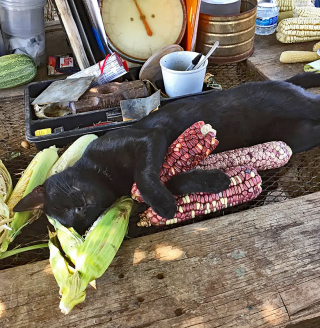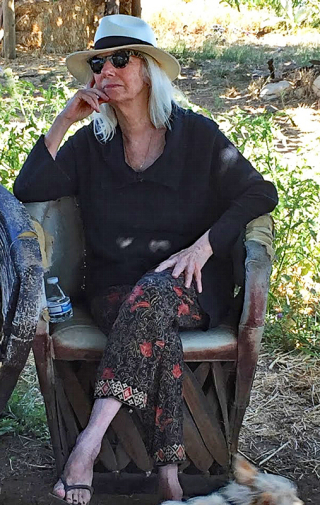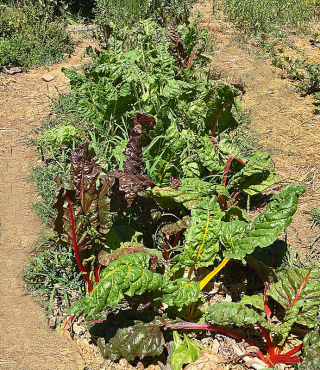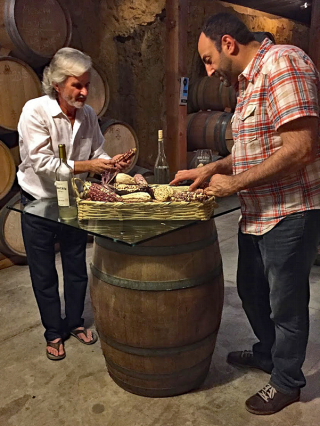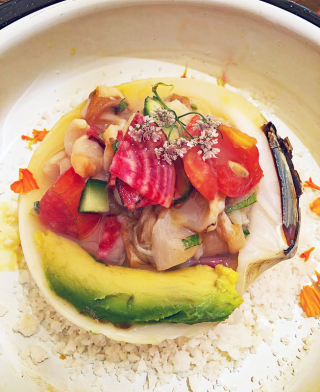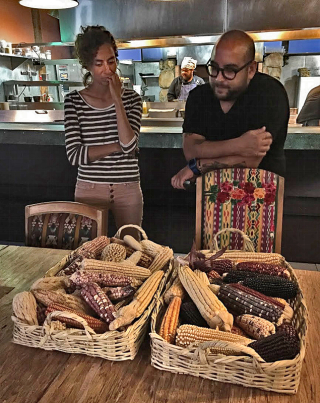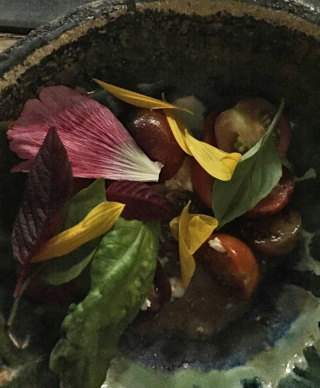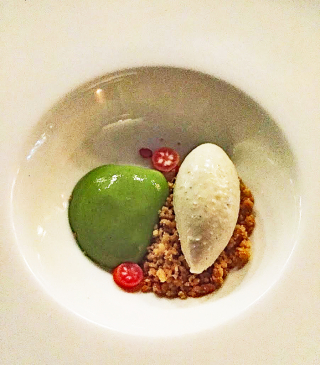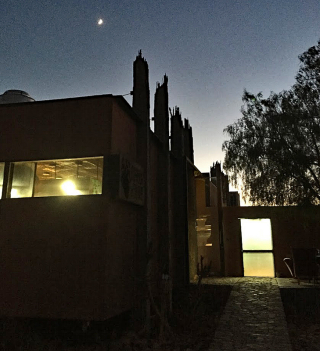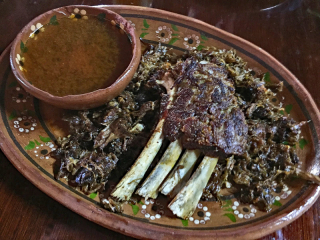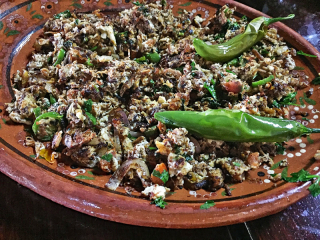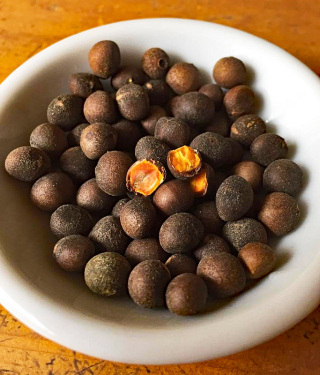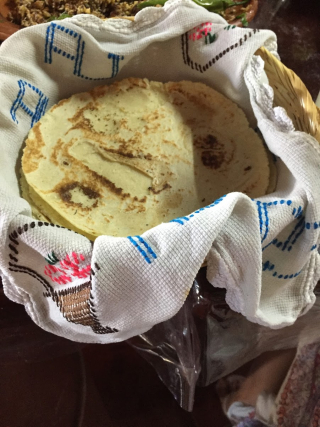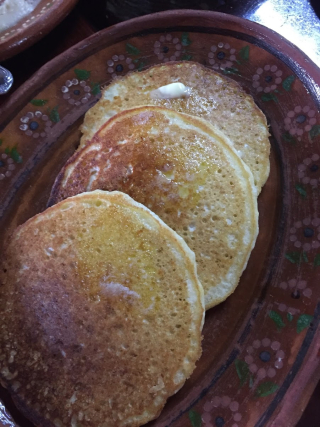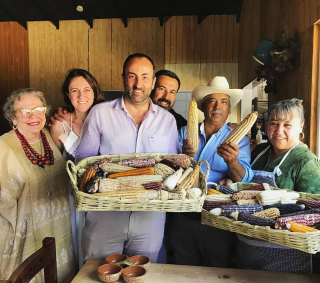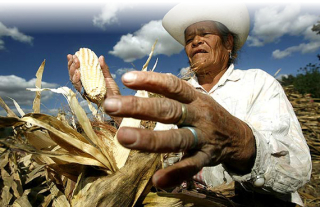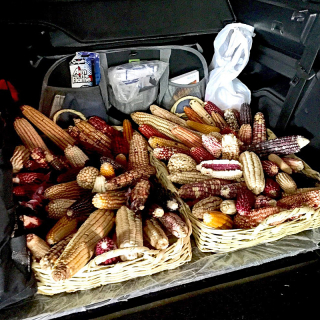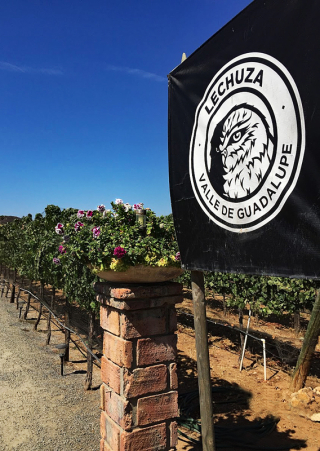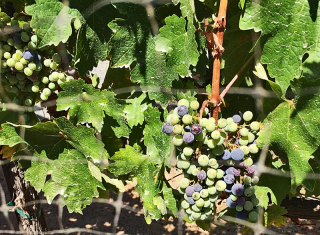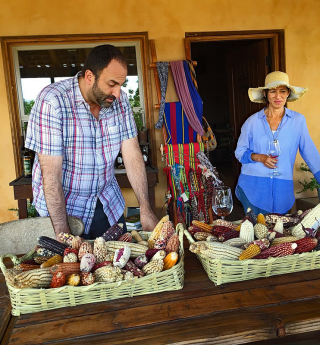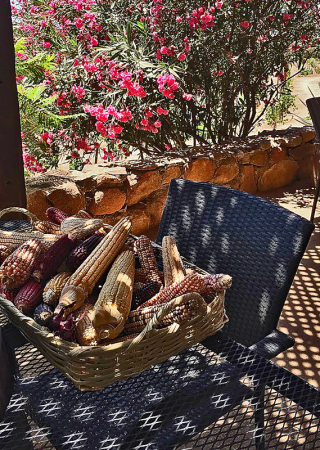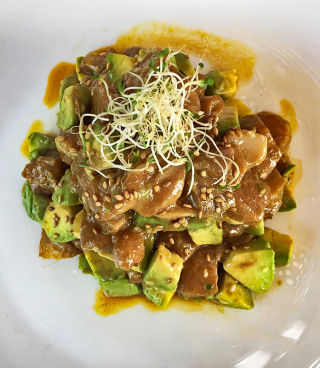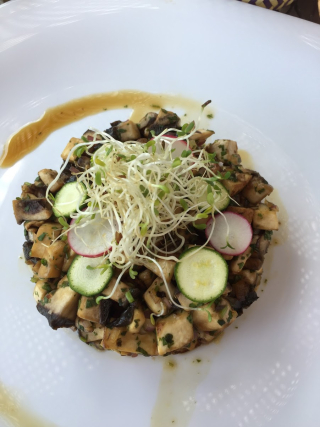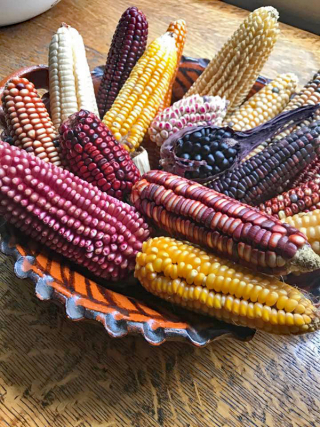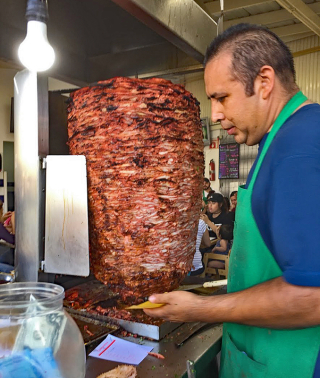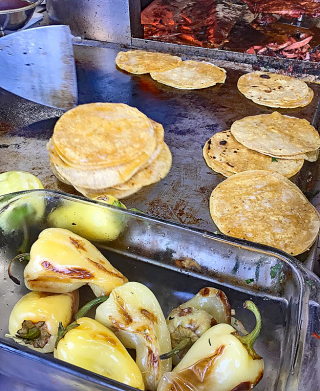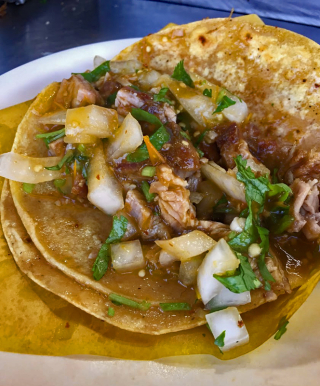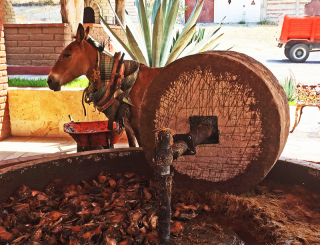
The Ilegal mezcal palenque (in a big stretch of translation, it's a mezcal distillery) is right on the road between Tlacolula and Teotitlán del Valle, in the little town which is arguably the mezcal capital of Oaxaca: Santiago de Matatlán. The animal's job is to keep that stone wheel moving over wood-fire roasted maguey fibers, crushing them to prepare them for the fermentation and subsequent distillation process.
The first week of May, 2018, Chef Silvana Salcido Esparza (Barrio Cafe Phoenix) and I were on the last leg of our Oaxaca trip, driving north from the Isthmus of Tehuantepec to Oaxaca City, when we saw a sign on the side of the road for ILEGAL (in Spanish 'illegal' has just one 'L') mezcal. She braked and swerved into the parking lot: "I can't believe we found this! It's one of the best mezcales that we serve at the Cafe!" We spent about an hour, fascinated, talking with an Ilegal mezcalero about its production.
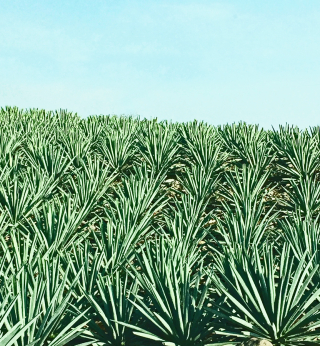
From the Ilegal building's porch, I took this photo of the company's espadín maguey cactus fields. Maguey grew as far as the eye could see. This maguey is cultivated, not wild, and each plant takes between seven and ten years to mature enough to harvest. Ilegal's joven (literally 'young', it means un-aged) mezcal gives you full-bodied espadín agave flavor. Barely smokey, its gently lemony flavors leave a slightly peppery sensation on your palate. Ilegal also produces a reposado (briefly aged) mezcal as well as an añejo (longer aged) mezcal.
Founded in approximately 2002-2003 by an American expatriate, John Brexer, in just 15 years the Ilegal brand has become one of the best-quality mezcales from Oaxaca. Because our time was so short at the palenque, we had little time to talk at depth with the producer. Click on this link to read the full story of the brand: ILEGAL MEZCAL. Nonetheless, we took a lot of pictures and it's fun to share them with you here.
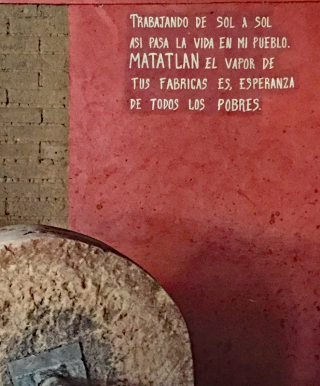
"Working from sun-up to sundown, life goes by this way in my village. MATATLÁN the steam from your factories is the hope of all of us poor."

Just-filled bottles of Ilegal mezcal, sealed by hand-dipping each bottle top in emerald green wax.
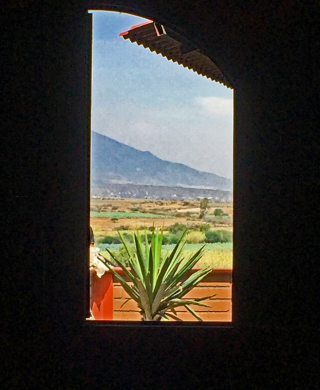
View from inside the Ilegal building.

Antique sea-green glass garrafones (20-liter bottles, about five US gallons), used for holding water–or for bulk mezcal! Today, it's difficult to find a garrafón like these; nearly all are now made of plastic.
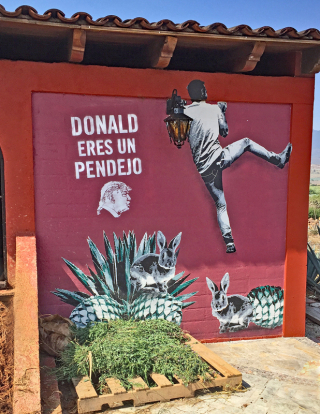
Do you know what the Spanish word 'pendejo' means? If not, here's your Spanish vocabulary lesson for today, just click here: not for children.
After our relámpago (lightning strike–i.e., really quick) stop at Ilegal, we headed for our much anticipated time prior to Oaxaca's airport: my dear friends Carina Santiago Bautista and her husband, Pedro Montaño, both soon to be equally dear to chef Silvana, had invited us to go to Tierra Antigua, their restaurant and gallery in Teotitlán del Valle, for a private comida with them. Carina is a celebrated cocinera tradicional, and Pedro is a prize-winning Zapotec master weaver. Silvana and I had been looking forward for days to being with them.

Tierra Antigua Restaurant and Gallery, Teotitlán del Valle, Oaxaca, exterior. Photo courtesy TripAdvisor.
Carina and Pedro and their family have been working for years to build the complex of restaurant, gallery, and bungalows for visitors. The installations are beautiful; prior to our meal, Carina gave Silvana and me a tour of their beautifully designed and constructed buildings. The interiors are modern and charming, the outdoor kitchen is rustic and traditional and designed for cooking classes. And the restaurant/gallery! Every wall shows off Pedro's extraordinary textiles (primarily wool rugs and wall hangings), all of which are for sale. Their talented son, Diego Montaño, is also a weaver and is represented in the gallery. His weaving incorporates whimsy and beauty into his designs.
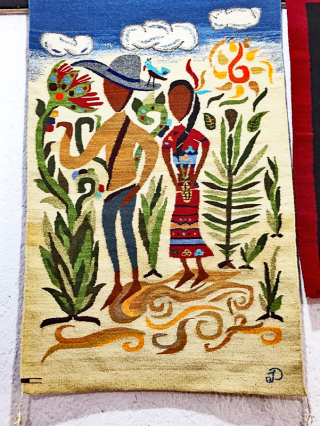
This small rug/wall hanging, woven by young Diego Montaño, represents the symbolism and traditions of the milpa, the ancient farming system of Mexico which is still used today. Click on the link for information about that. Chef Silvana bought this marvelous weaving for her home.
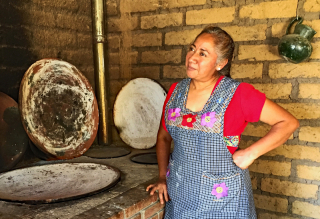
The completely delightful Carina Santiago in her outdoor kitchen, standing at the stove. Those are clay comales (comparable to griddles) coated with cal, the white substance on each comal's surface. It's put there to make the comal non-stick! If you're thinking of going to Oaxaca, schedule a cooking class with her. She is fluently bilingual (Spanish/English) and will teach you Zapotec food preparation methods and flavors that go back hundreds of years.
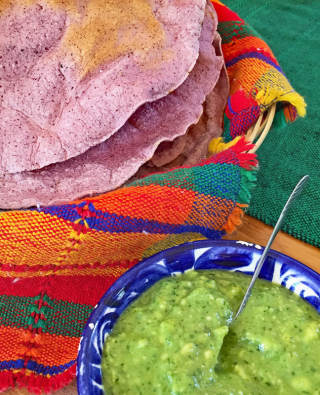
First thing at the table: home-made Oaxaca-style blue corn tortillas and salsa verde cruda–raw green salsa. This salsa is so bright, so vibrant in one's mouth, and so wonderfully delicious that it awakened our palates for the rest of our meal to come. Carina and her assistants prepare dried corn in the evening for grinding into masa (dough) the following day.
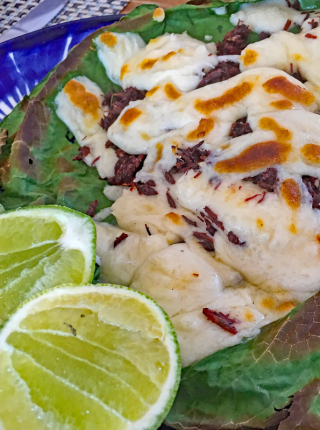
What's on the plate? Hoja santa leaf, with its light anise flavor, and quesillo (Oaxaca cheese), melted together with toasted chapulines (limón and chile-flavored grasshoppers). A squeeze of limón and wow!
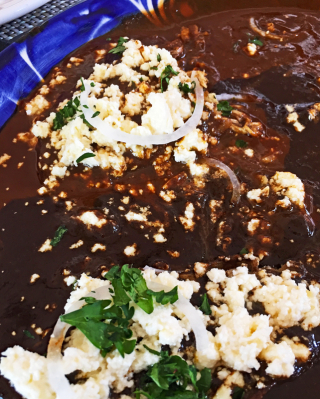
Mole negro (black mole), the king of Oaxaca's moles. Prepared with more than 30 ingredients, the intense flavors of this dish become more complex and more developed as one continues eating it. The component that gives mole negro on of its most distinctive tastes is dried and reconstituted chile chilhuacle negro, a rare Oaxacan chile.
First quality chile chilhuacle negro, for sale at the Mercado 20 de noviembre, Oaxaca City. The sign shows an interesting and uncommon spelling.
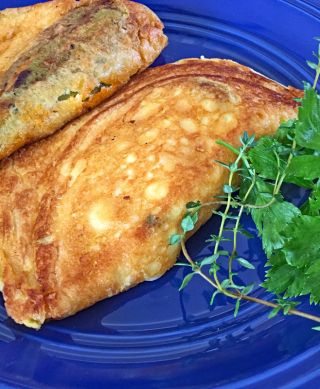
Chiles rellenos Oaxaca style: a fresh chile jalapeño, in this case seeded and stuffed with picadillo (a kind of Mexican hash), then covered with an egg batter and fried. I'll be seeing Carina in a few weeks and would love to eat this again–and everything else, too! Carina
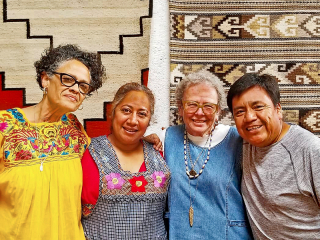
It's obligatory in Mexico to have a photo taken for posterity. From left, chef Silvana, cocinera tradicional Carina, Mexico Cooks!, and weaver Pedro Montaño. Behind us are two of Pedro's gorgeous rugs. If you're anywhere near San Diego, California, you'll find him and his wonderful work at Bazaar del Mundo's annual Latin American Festival, August 3-5, 2018. Click on the link for more information!

On the way out of town, we stopped for ice cold bottled water in a tiny grocery store across the street from the church. This is the Mexico I've known since 1981: a little bit of this, a little bit of that, just what you need when you need it, and the friendliest owner in town. I know I'll go back in August to say hello.
Tierra Antigua Restaurante y Galería
Benito Juárez 175 (left-hand side of the street)
Teotitlán del Valle, Oaxaca
Telephone from the USA: 011-52-951-166-6160 for reservations, cooking classes or to eat at the restaurant.
Spanish and English spoken
Tell them Mexico Cooks! sent you!
Next week: where to next? It's going to be as much a surprise to me as it is to you! I hope you've enjoyed coming along as chef Silvana and I traveled through one small part of wonderful Oaxaca. I'd be happy to take you touring there–in real life. Let me know if you'd like to schedule a trip!
Looking for a tailored-to-your-interests specialized tour in Mexico? Click here: Tours.
